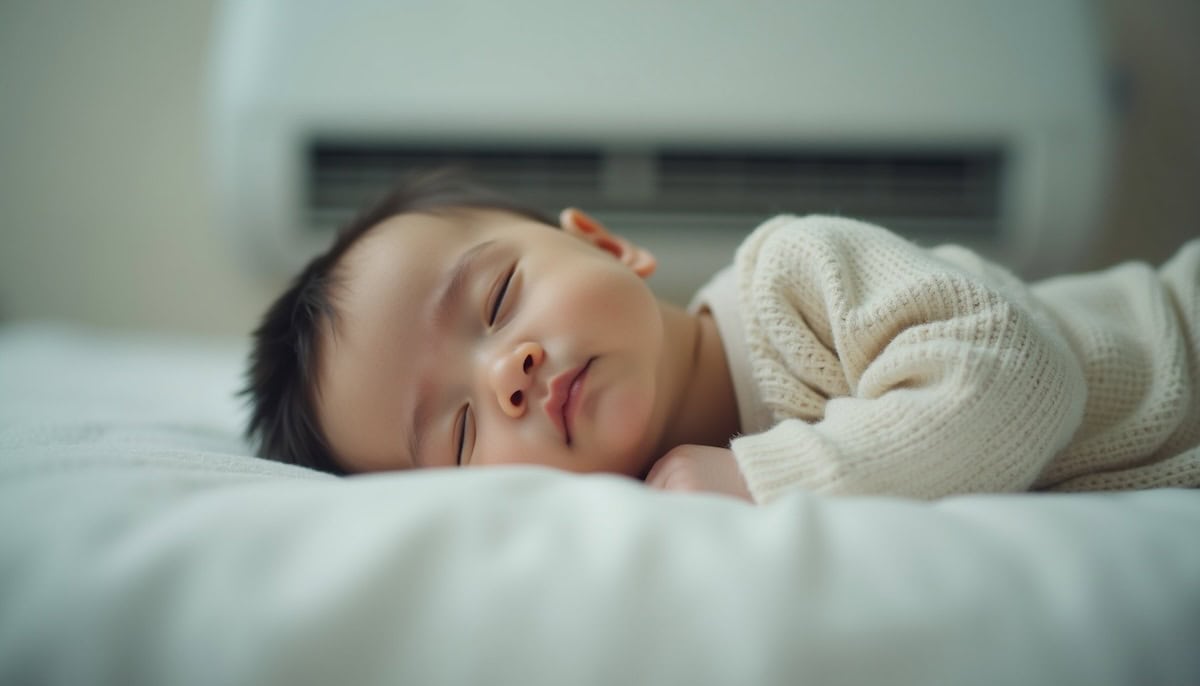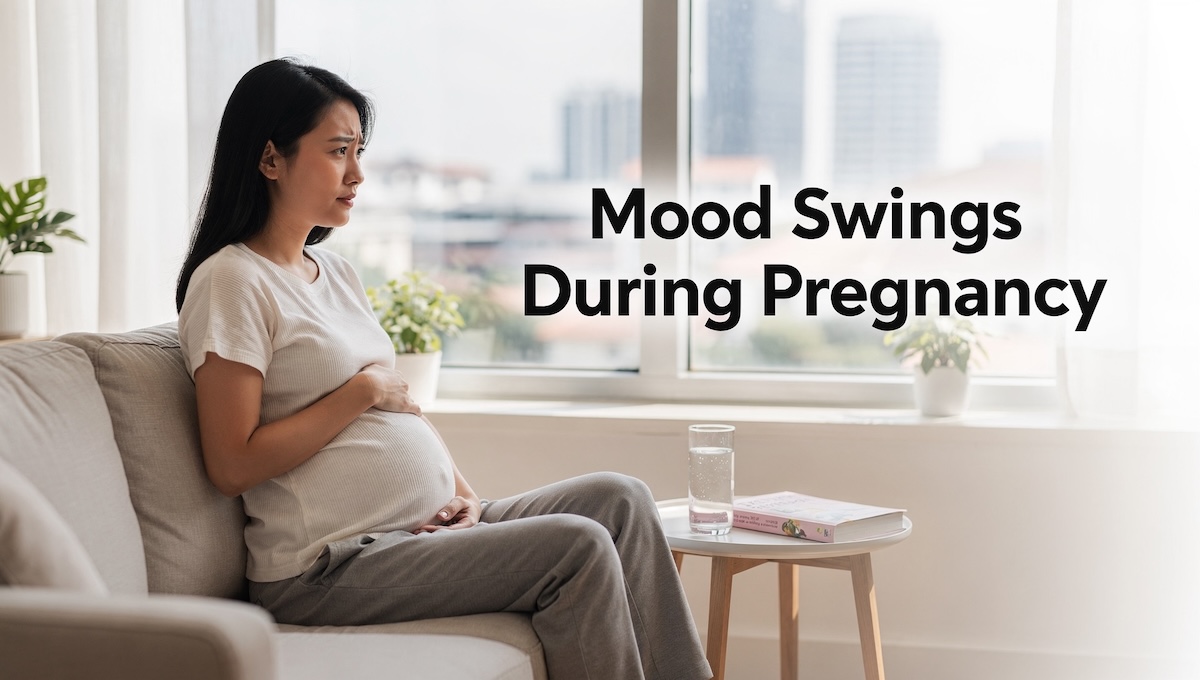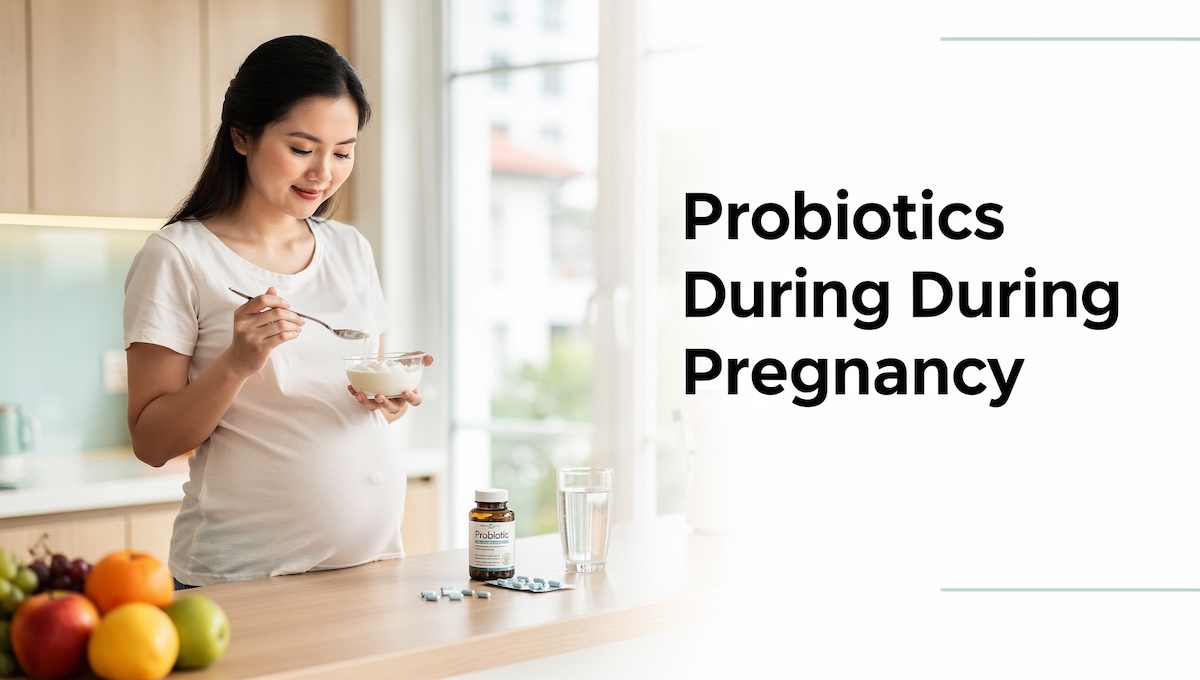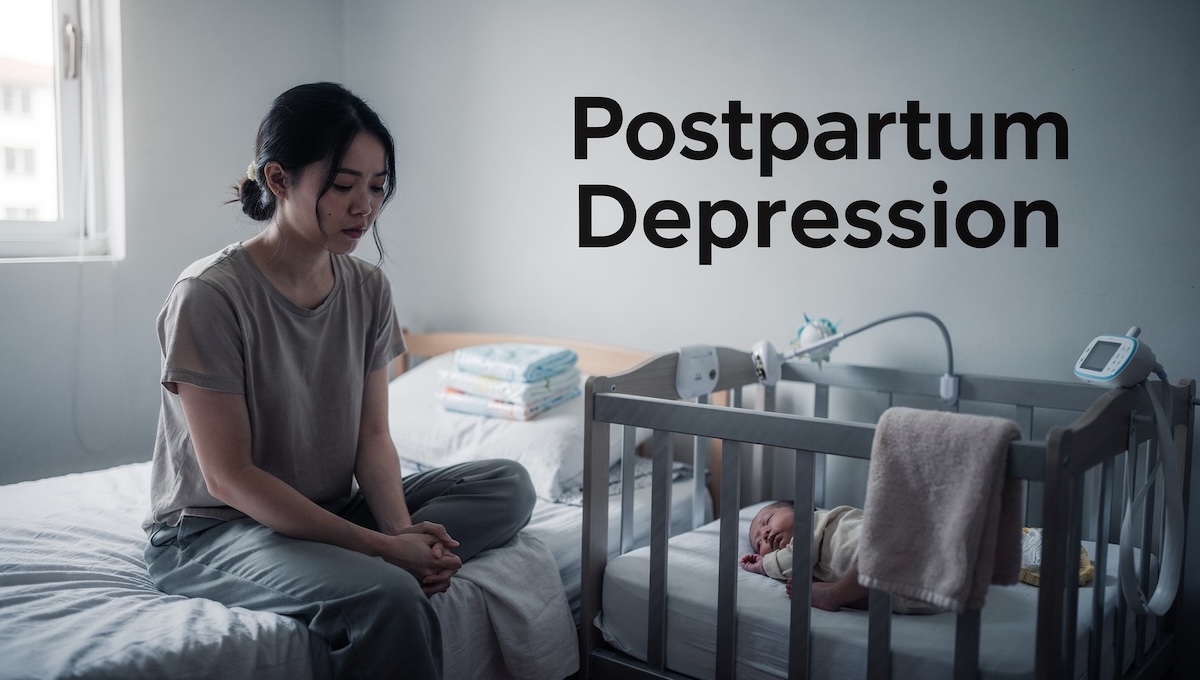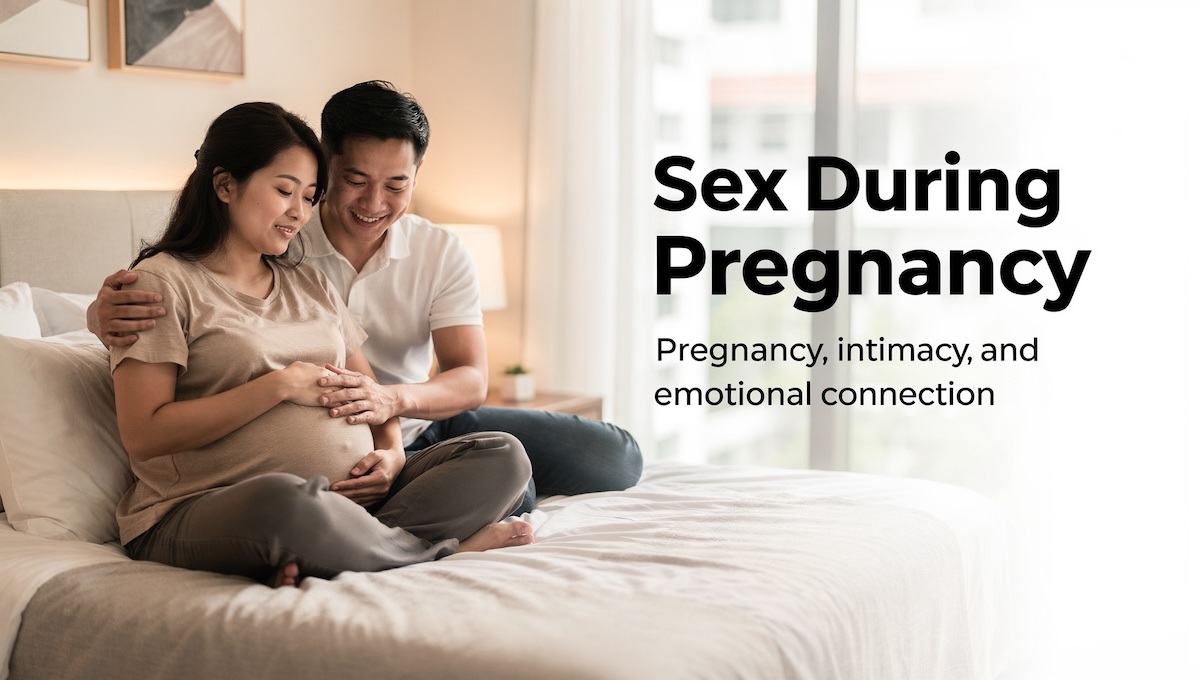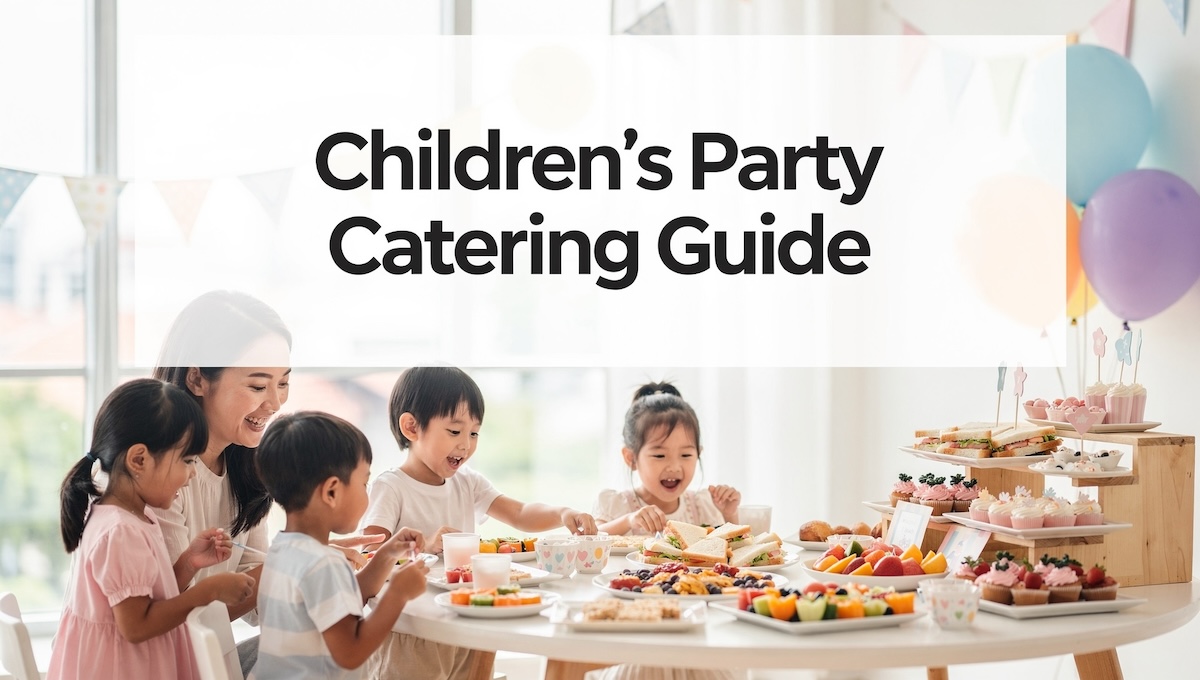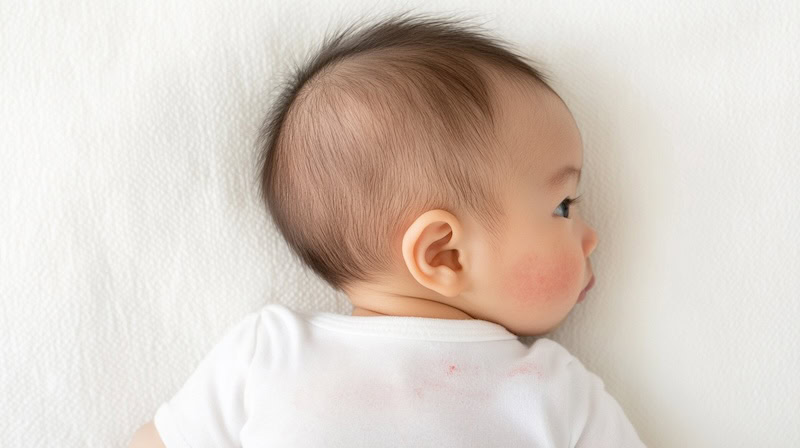
Phew! Is it just me or are the days getting hotter every year? I step outside, and it’s like walking into a sauna. No wonder we’re all turning up the AC! Many parents worry about using an air conditioner for their babies during extreme heat, wondering if it’s safe or if it could cause problems. As a new parent, I can’t help but wonder how all this artificial cool air is affecting my little one. I mean, babies are so tiny and fragile right? I started thinking: what’s the deal with air conditioning and infants? Is it a lifesaver or something to be cautious about? Let’s get into this cool topic (pun intended!) and figure out how to keep our tiny humans comfy and safe in this hot hot world.
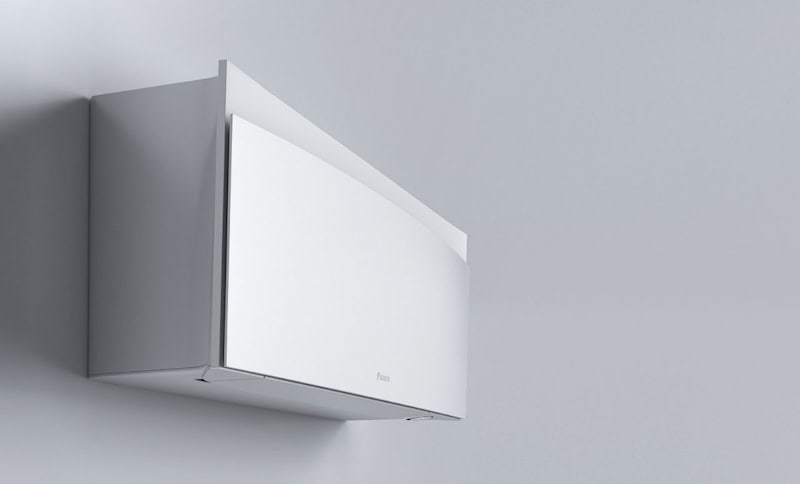
Temperature Regulation in Babies
Newborns can’t regulate their body temperature as well as adults. Knowing the normal body temperature for newborns is key, as keeping them at the right temperature is crucial for their health and development. They’re so small and have such a high surface area to weight ratio they can get cold or hot so quickly. Maintaining the right temperature helps a baby’s body retain body heat and conserve energy, which is important for their health and development. Because a baby’s body is less efficient at conserving energy due to rapid heat loss, careful temperature regulation is essential.
Room Temperature for Newborns
Experts recommend the room temperature be between 23-25°C for infants. Use a room thermometer to monitor the temperature near your baby’s crib. This range is the suitable temperature and falls within the optimal range for infants, supporting their health and well-being. Setting the ac temperature to the ideal aircon temperature (within this optimal temperature range) helps maintain a safe and comfortable environment for your baby.
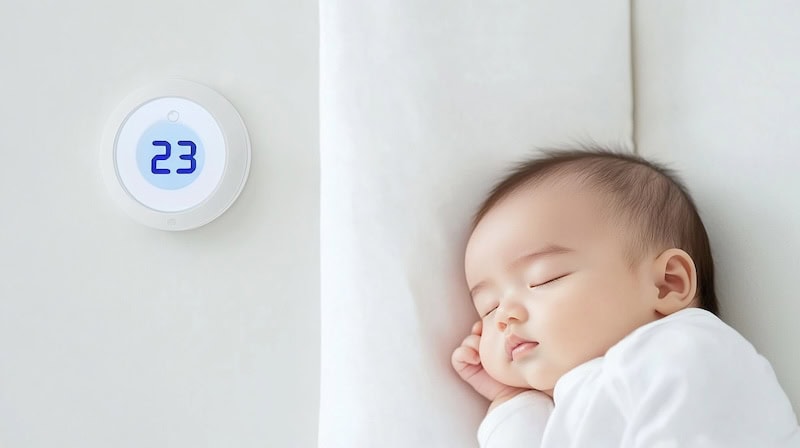
Stable Environment
A stable temperature is key to a baby’s health. High temperatures can cause heat rash, a condition where the sweat ducts are blocked and causes red itchy skin. Exposure to warm air for extended periods can also be uncomfortable and potentially unsafe for infants. Frequent temperature fluctuations can stress out newborns and can lead to disrupted sleep or more serious health issues. High temperatures and humidity can cause heat stroke, a potentially life-threatening condition where the body overheats and dehydrates. By keeping the room within the ideal range, you’re creating a safe and cosy space for your tiny human.
Air Conditioning for Babies
Better Sleep
A good night’s sleep is essential for baby’s growth and development. Air conditioning can regulate the room temperature and create an environment for deep and restful sleep. Maintaining the right temperature not only promotes deep sleep but also supports healthy sleep patterns in babies. A cool environment helps babies sleep longer and more soundly by minimizing disruptions caused by discomfort from heat or cold.
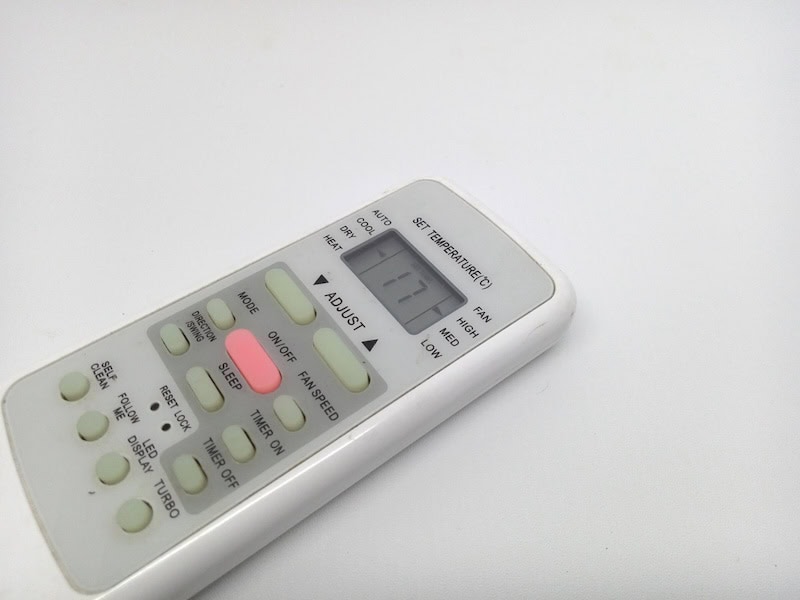
Comfortable Environment for Feeding
Feeding sessions whether breast or bottle feeding require a calm and comfortable environment. With air conditioning you can create a consistent and pleasant atmosphere for feeding times for you and your baby. A comfortable baby will feed better and overall be better nourished and grow.
Heat Exhaustion Risks
During hot months babies are more prone to heat exhaustion as they can’t regulate their body temperature as well as adults. Using air conditioning effectively reduces the risk of overheating by keeping the temperature within the recommended range (23-25°C). This will keep your baby safe and comfortable even when it’s boiling outside.
Air Conditioning Risks for Infants
While air conditioning has many benefits it’s important to be aware of the risks when using it around infants. Improper use of air conditioning can make a baby sick, leading to symptoms like a runny nose or making the baby uncomfortable. Positioning an air vent away from the baby’s crib is key to a safe sleeping environment. Regularly checking the position of air vents is also important to prevent cold air blasts from hitting the baby and compromising their body temperature and comfort.
1. SIDS
There’s some concern that air conditioning can contribute to Sudden Infant Death Syndrome (SIDS). Make sure the baby isn’t too cold or too hot.
2. Dehydration and Hypothermia
Babies are more prone to dehydration and hypothermia due to their underdeveloped thermoregulation system. Signs of dehydration:
- Dry mouth
- Fewer wet diapers
- Sunken eyes
Signs of hypothermia:
- Cold hands and feet
- Pale skin
- Lethargy
3. Respiratory Issues
Dry air from air conditioning units can cause respiratory issues in babies, as air conditioning reduces humidity, which can contribute to these problems. Watch for:
- Coughing
- Wheezing
- Nasal congestion
Regular maintenance of your AC and proper humidity levels can help minimize these risks.
Protecting Your Baby from Air Quality Issues
When it comes to your baby’s health, air quality in the nursery is just as important as keeping the right room temperature. Air conditioning can help you create a safe and comfortable environment, but it’s important to be mindful of how it affects your baby’s body temperature and overall well-being.
The ideal room temperature for a baby is generally between 20-22°C, which not only helps your little one sleep better but also reduces the risk of sudden infant death syndrome (SIDS). However, while air conditioning keeps the room cool, it also reduces humidity levels. This can sometimes lead to dry skin or stuffy noses, especially for babies with sensitive skin.
To keep your baby comfortable in an air conditioned room, consider using a cool mist humidifier. This helps maintain healthy humidity levels and prevents dry skin or respiratory discomfort. Good air circulation is also key—use a fan on a gentle setting or adjust your air conditioning unit to circulate air without creating cold drafts. And don’t forget to clean your aircon filters regularly! Dust and allergens can build up quickly, affecting air quality and potentially causing health problems for your baby.
Maintaining a stable temperature is crucial. Babies are sensitive to sudden temperature changes, which can make it harder for them to regulate their body temperature. Dress your baby in light, breathable clothing and use a light blanket or sleep sack to help them stay at a comfortable temperature. Always check your baby’s chest or back to make sure they’re not too hot or too cold, and adjust the aircon temperature as needed to keep the environment just right.
When choosing an air conditioning unit for your baby’s room, look for features like precise temperature control, quiet operation, and built-in air purification or humidity control. These can help you maintain a stable, healthy environment where your baby can sleep, play, and grow.
By taking these simple steps—using a cool mist humidifier, ensuring good air circulation, keeping your AC unit clean, and monitoring your baby’s comfort—you can protect your baby from air quality issues and create a safe, healthy space for them to thrive. If you ever have concerns about your baby’s health or the air quality in their room, don’t hesitate to consult your pediatrician for advice tailored to your family’s needs.
Precautions when using air conditioning with babies
Dressing Your Baby in Air Conditioned Environment
Baby safety in air-cond environment involves dressing your baby properly. Babies are more sensitive to temperature changes than adults so dress them in a way that keeps them comfortable without overheating or chilling.
Dressing recommendations for infants based on ambient temperature:
- Layering: A general rule of thumb is to dress your baby in one extra layer than what you would wear. For example, if you’re comfortable in a t-shirt, your baby might need a t-shirt and a light blanket. Consider how many layers are needed based on the room temperature—add or remove layers as needed to keep your baby comfortable.
- Breathable fabrics: Choose cotton, which allows air circulation and absorbs moisture. This will keep the baby’s skin dry and comfortable and prevent rashes or irritation. In cooler rooms, a light sleep sack made of breathable fabric is a good option to help regulate your baby’s temperature safely.
- Avoid overheating: Overdressing can be as bad as under dressing. Check for signs of overheating such as sweating, flushed cheeks or rapid breathing. To assess your baby’s warmth, feel the baby’s chest rather than hands or feet, as the chest gives a better indication of their core temperature. Remember the goal is to be warm but not too hot.

Check Your Baby’s Comfort
Monitoring your baby in an air-conditioned room is important. Babies can’t tell us when they’re too hot or cold, so we need to look for signs.
Key indicators:
- Cold hands or feet: This might not mean the baby is cold. Check the back or chest instead; it’s a better indicator of overall warmth. If your baby has a cool chest, it may be a sign they need another layer.
- Sweating or flushed skin: These can be signs the baby is too hot. Adjust the room temperature or remove a layer of clothing.
- Restlessness and irritability: If a baby is uncomfortable, they may become fussy. Watch out for their behaviour.
Baby safety in AC:
- Avoid direct airflow: Place the crib or bassinet away from vents to prevent cold air from blowing directly to your baby.
- Dress in layers: Light clothing with one extra layer than what adults wear will keep the body temperature right.
- Regular AC maintenance: Make sure your unit is clean to avoid emissions and skin dryness. A clean AC is a safer environment for your baby.
Now you know the signs and practices to keep your baby safe and comfortable in air-conditioned space.
Alternatives to Traditional Air Conditioning Systems
Air Coolers vs AC for Your Baby’s Room
When looking for options beyond traditional air conditioning, air coolers or evaporative coolers can be a great choice for your baby’s room. Here are the benefits:
- Humidity Levels: Unlike air conditioners, which can dry out the air, air coolers add moisture back to the environment. This will maintain the humidity levels good for your baby’s skin health. Dry air can cause skin irritation and respiratory issues, so keeping the room humid enough can prevent these problems.
- Natural Cooling: Air coolers work by evaporating water to cool the air, a more natural process than refrigerant-based cooling in AC units. This will keep the room comfortable and avoid overcooling.
- Cost Effective: Air coolers are generally more energy-efficient and cost-effective than traditional AC units.They consume less electricity, so it’s a budget-friendly option to keep your baby comfortable.
When using an air cooler, make sure to keep it clean. Dirty water tanks can be breeding grounds for bacteria and mosquitoes, which can be harmful to your baby.
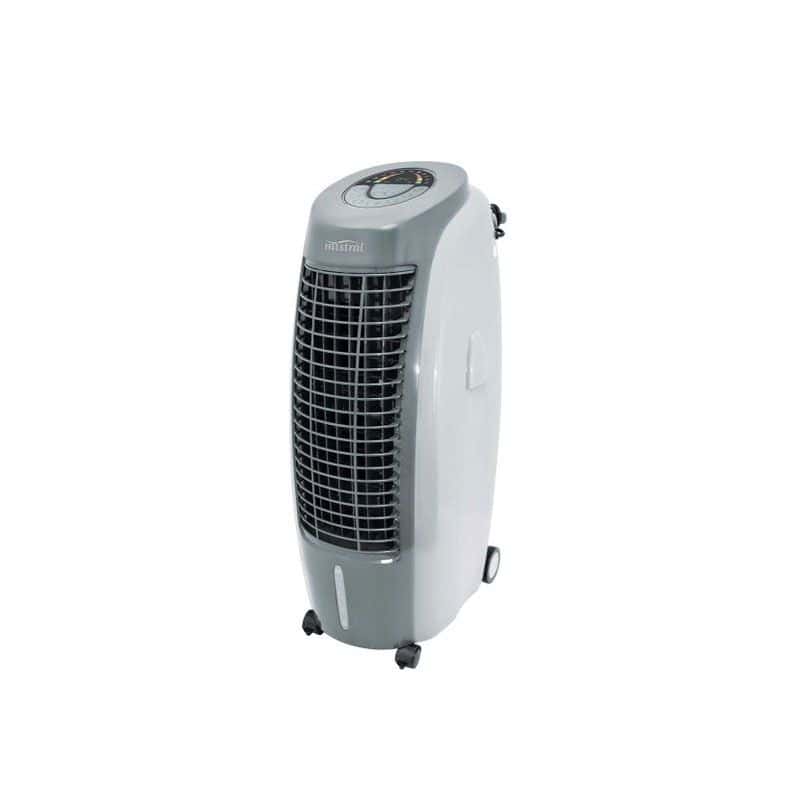
A Mistral air cooler.
How to Maintain Your Air Cooler: Tips to Keep It Clean and Safe For Your Baby
Keep your air cooler in good condition for a healthy environment for your baby. Regular cleaning will prevent bacteria from growing and mosquitoes from breeding in the water tanks, which can be toxic to infants.
Here are the tips:
- Regular Cleaning Schedule: Clean the water tank once a week. This will remove any bacteria or mould buildup.
- Use Clean Water: Always fill the cooler with fresh water to minimize contamination.
- Inspect for Mosquitoes: Check the cooler regularly for mosquito breeding. Use a mosquito net or cover to prevent this.
- Filter Maintenance: Clean or replace filters as per manufacturer’s instructions. Dirty filters can harbor allergens and reduce cooler’s efficiency.
- Dry Out Periodically: Dry the cooler completely when not in use. This will prevent mold growth and no stagnant water will be left.
By following these tips, you will have a safe and effective air cooler for your baby’s room. Regular maintenance means better air quality and a healthier space for your baby.
Conclusion: Air Conditioning and Babies’ Health
Air conditioning can be beneficial for infants, like better sleep and reduced risk of heat exhaustion, especially in hot weather. But it has risks like dehydration, respiratory issues, and temperature fluctuations, which can affect your baby’s sensitive skin and overall health. Maintaining the right temperature and humidity helps protect your baby’s skin and sensitive skin from dryness and irritation. Proper air conditioning use supports your baby’s health and immune system by providing a stable environment, which is important for the baby’s immune system to develop and function well. Be mindful of room temperature, proper ventilation, and dress your baby accordingly.
- 23-25°C temperature range
- No direct airflow to the baby
- Regular cleaning of aircon or air cooler
